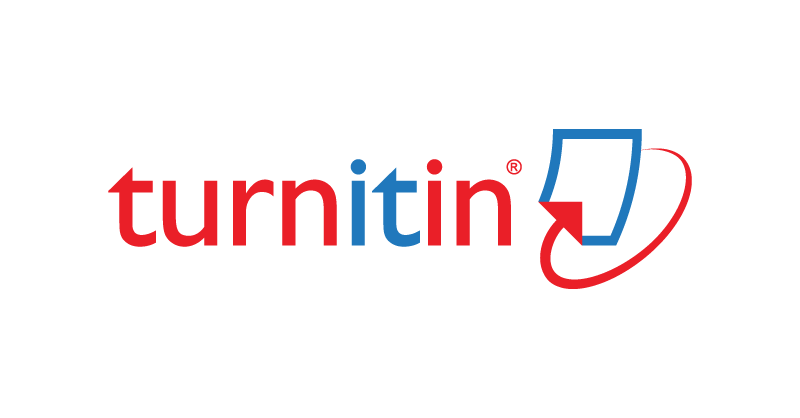Effect of Wearing Different Types of Face Mask to Heat Strain During Physical Activities
DOI:
https://doi.org/10.32734/jsti.v23i2.6392Keywords:
Heat Strain, Mask, Physical ActivitiesAbstract
There is a concern to use masks during physical activities when exercising and working. Wearing masks during physical activity will pose a risk to physiological changes in the body and human heat strain by the principle of a mask can block the respiratory tract. This study aims to determine how much the human physiological changes quantitatively and qualitatively when using different types of medical masks, cloths and N95. There were 10 respondents as a sample of this study. The results obtained show that the different types of masks to the physiological response of the human body, cloth masks can affect the physiological changes the highest compared to medical masks and N95. The subjective response in the form of thermal comfort, mask sensation, and thermal sensation shows that of the 3 types of masks, the N95 mask is the mask that is the most uncomfortable when worn. The recommendations of the 3 types of masks are medical masks because they affect the slightest increase in the risk of heat stress while the cloth masks have the highest increase in tympanic temperature and Physiological Strain Index.
Downloads
References
Lee HP, Wang DY. Objective assessment of increase in breathing resistance of N95 respirators on human subjects. Ann Occup Hyg. 2011;55:917–21.
Y. Tian et al., “Wearing a N95 mask increases rescuer’s fatigue and decreases chest compression quality in simulated cardiopulmonary resuscitation,†Am. J. Emerg. Med., no. xxxx, pp. 1–5, 2020, doi: 10.1016/j.ajem.2020.05.065.
F. Pifarré, D. D. Zabala, G. Grazioli, and I. de Y. i Maura, “COVID-19 and mask in sports,†Apunt. Sport. Med., vol. 55, no. 208, pp. 143–145, 2020, doi: 10.1016/j.apunsm.2020.06.002.
S. Driver et al., “Effects of wearing a cloth face mask on performance, physiological and perceptual responses during a graded treadmill running exercise test,†Br. J. Sports Med., pp. 1–7, 2021, doi: 10.1136/bjsports-2020-103758.
D. S. Moran, A. Shitzer, and K. B. Pandolf, “A physiological strain index to evaluate heat stress,†Am. J. Physiol. - Regul. Integr. Comp. Physiol., vol. 275, no. 1 44-1, 1998, doi: 10.1152/ajpregu.1998.275.1.r129.
A. Frank, M. Belokopytov, Y. Shapiro, and Y. Epstein, “The cumulative heat strain index - A novel approach to assess the physiological strain induced by exercise-heat stress,†Eur. J. Appl. Physiol., vol. 84, no. 6, pp. 527–532, 2001, doi: 10.1007/s004210000368.
G. Havenith, I. Holmér, and K. Parsons, “Personal factors in thermal comfort assessment: Clothing properties and metabolic heat production,†Energy Build., vol. 34, no. 6, pp. 581–591, 2002, doi: 10.1016/S0378-7788(02)00008-7.
N. Ruth, L. G. Berglund, A. R. Gwosdow, and A. B. Dubois, “Thermal sensation of the body as influenced by the thermal microclimate in a face mask,†Ergonomics, vol. 30, no. 12, pp. 1689–1703, 1987, doi: 10.1080/00140138708966058.
Evanhoff B, Kim L, Mutha S, Jeffe D, Haase C, Andereck D, et al. Compliance with universal precautions among emergency department personnel caring for trauma patients. Ann Emerg Med 1999;33:160-5.
Loeb M, Dafoe N, Mahony J, John M, Sarabia A, Glavin V, et al. Surgical mask vs N95 respirator for preventing influenza among health care workers: a randomized trial. JAMA 2009;302:1865-71.
Y. C. Lin and C. P. Chen, “Thermoregulation and thermal sensation in response to wearing tight-fitting respirators and exercising in hot-and-humid indoor environment,†Build. Environ., vol. 160, no. March, p. 106158, 2019, doi: 10.1016/j.buildenv.2019.05.036.
R. J. Roberge, J. H. Kim, and S. Benson, “N95 filtering facepiece respirator deadspace temperature and humidity,†J. Occup. Environ. Hyg., vol. 9, no. 3, pp. 166–171, 2012, doi: 10.1080/15459624.2012.660428.
A. T. Johnson, “Respirator masks protect health but impact performance: A review,†J. Biol. Eng., vol. 10, no. 1, pp. 1–12, 2016, doi: 10.1186/s13036-016-0025-4.
X. Zhou, Q. Ouyang, Y. Zhu, C. Feng, and X. Zhang, “Experimental study of the influence of anticipated control on human thermal sensation and thermal comfort,†Indoor Air, vol. 24, no. 2, pp. 171–177, 2014, doi: 10.1111/ina.12067.
D. Epstein et al., “Return to training in the COVID-19 era: The physiological effects of face masks during exercise,†Scand. J. Med. Sci. Sport., 2020, doi: 10.1111/sms.13832.
J. H. Kim, S. M. Benson, and R. J. Roberge, “Pulmonary and heart rate responses to wearing N95 filtering facepiece respirators,†Am. J. Infect. Control, vol. 41, no. 1, pp. 24–27, 2013, doi: 10.1016/j.ajic.2012.02.037.
T. H. Lin, C. C. Chen, S. H. Huang, C. W. Kuo, C. Y. Lai, and W. Y. Lin, “Filter quality of electret masks in filtering 14.6–594 nm aerosol particles: Effects of five decontamination methods,†PLoS One, vol. 12, no. 10, pp. 1–15, 2017, doi: 10.1371/journal.pone.0186217.
J. She, H. Nakamura, K. Makino, Y. Ohyama, and H. Hashimoto, “Selection of suitable maximum-heart-rate formulas for use with Karvonen formula to calculate exercise intensity,†Int. J. Autom. Comput., vol. 12, no. 1, pp. 62–69, 2015, doi: 10.1007/s11633-014-0824-3.
Bruce, R.A., Kusumi, F., and Hosmer, D., Maximal Oxygen Intake and Nomographic Assessment of Functional aerobic Impairment in Cardiovascular Disease, American Heart Journal, 1973,Vol. 85, pp. 546-562
Y. Li H. Tokura Y.P. Guo A.S.W. Wong T. Wong J. Chung E. Newton “Effects of wearing N95 and surgical facemasks on heart rate, thermal stress and subjective sensations,†Int. Arch. Occup. Environ. Health, vol. 78, no. 6, pp. 501–509, 2005, doi: 10.1007/s00420-004-0584-4.
Moore D, Gamage B, Bryce E, Copes R, Yassi A. BC Interdisciplinary Respiratory Protection Study Group. Protecting health care worker from SARS and other respiratory pathogens: organizational and individual factors that affect adherence to infection control guidelines.Am J Infect Control 2005;33:88-96.
A. S. Baig, C. Knapp, A. E. Eagan, and L. J. Radonovich, “Health care workers’ views about respirator use and features that should be included in the next generation of respirators,†Am. J. Infect. Control, vol. 38, no. 1, pp. 18–25, 2010, doi: 10.1016/j.ajic.2009.09.005.
A. Scarano, F. Inchingolo, and F. Lorusso, “Facial skin temperature and discomfort when wearing protective face masks: Thermal infrared imaging evaluation and hands moving the mask,†Int. J. Environ. Res. Public Health, vol. 17, no. 13, pp. 1–9, 2020, doi: 10.3390/ijerph17134624.
J. H. Kim, S. M. Benson, and R. J. Roberge, “Pulmonary and heart rate responses to wearing N95 filtering facepiece respirators,†Am. J. Infect. Control, vol. 41, no. 1, pp. 24–27, 2013, doi: 10.1016/j.ajic.2012.02.037.
Hayashi C, Tokura H, "The effects of two kinds of masks (with/without exhaust valve) on clothing microclimates inside the mask in participants wearing protective clothing for spraying pesticides,".2004, Int Arch Occup Environ Health 77:73–78.
White MK, Hodous TK, Vercruyssen M, “Effects of thermal environment and chemical protective clothing on work tolerance, physiological responses, and subjective ratings," 1991,Ergonomics 34:445–457.
Downloads
Published
How to Cite
Issue
Section
License
Copyright (c) 2021 Jurnal Sistem Teknik Industri

This work is licensed under a Creative Commons Attribution-ShareAlike 4.0 International License.
The Authors submitting a manuscript do so on the understanding that if accepted for publication, the copyright of the article shall be assigned to TALENTA Publisher Universitas Sumatera Utara as the publisher of the journal.
Copyright encompasses the rights to reproduce and deliver the article in all forms and media. The reproduction of any part of this journal, its storage in databases, and its transmission by any form or medium will be allowed.



















